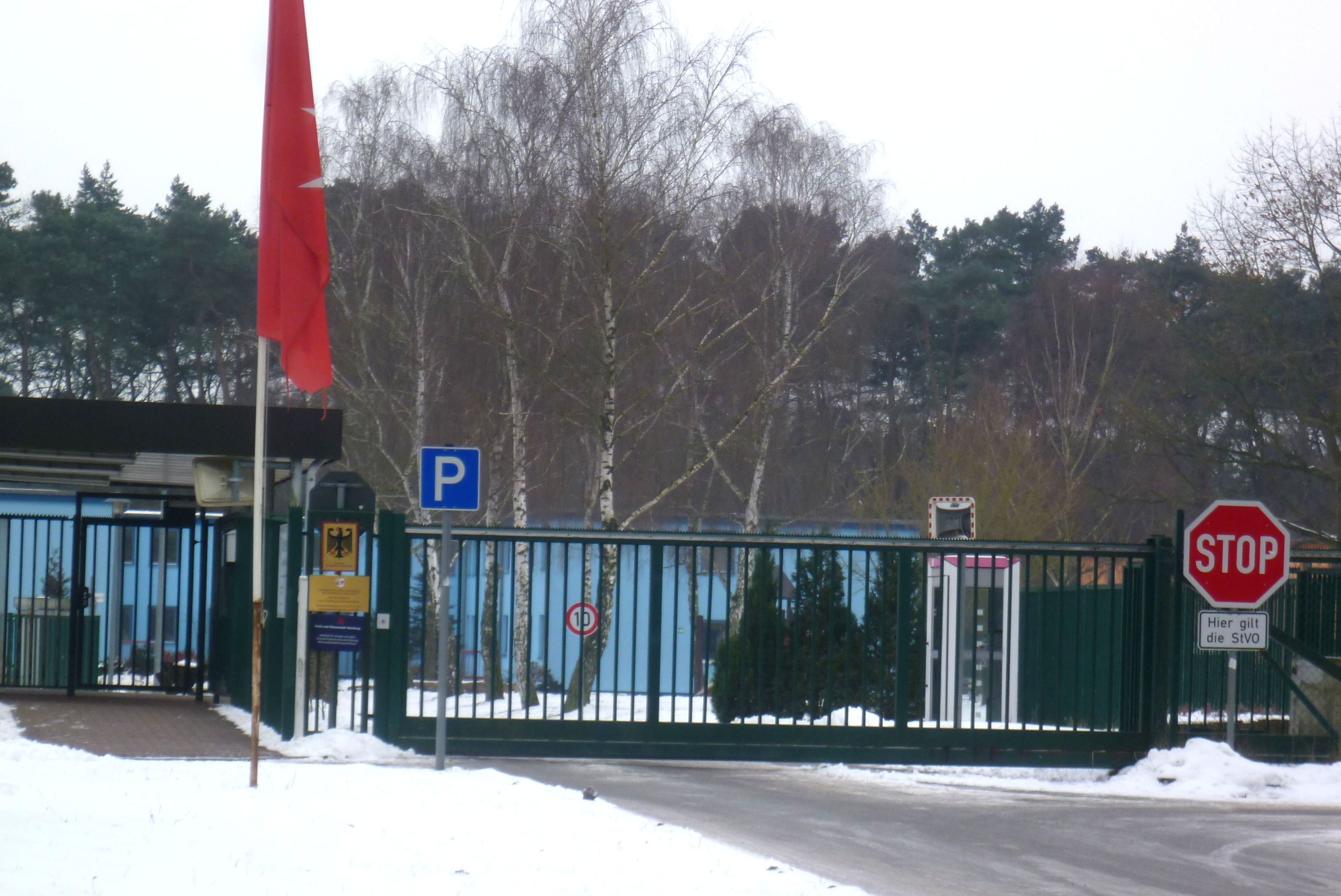Nostorf
Nostorf in the district of Ludwigsburg pleasure Parchim is a town in Mecklenburg- Vorpommern ( Germany ). It is administered by the Office Boizenburg country located in the not office belonging to the city Boizenburg / Elbe.
The municipality consists of the villages Nostorf, Bickhusen, Horst and Rensdorf.
Geography
Nostorf is the most western town in Mecklenburg-Vorpommern and Schleswig -Holstein borders and Lower Saxony. Western parts of municipalities belong to the nature reserve Stecknitz Delvenau, a southern part of the natural park area Mecklenburgisches Elbetal. The nearest towns are Boizenburg about five kilometers south-east and Lauenburg about seven kilometers south-west. Through the municipal area extend the federal highway 5, the mill stream and to the municipal boundaries of the Elbe and the Delvenau.
History
Nostorf
In a Boizenburger Church Visitation Protocol in 1444 and in Landesbederegister of 1453 is called the village Notstorp and retains this name in the following centuries in. The meaning of the word is unknown. The village was originally created as a blind village square with the closed side to the valley of Mill creek and a single access road to the arable land in the north. In the 15th century it belonged to the possessions of the family of Sprengel based in Gresse and then reached the sovereign Domanium. 1825 the village had ten full- farmers and five Büdner.
The Nostorfer village church dates back to a previous chapel from 1483. The village has always been in the parish Zweedorf.
In the westerly Delvenauniederung are the remains of the spell Borg, a medieval lowland castle.
Bickhusen
The German place name encountered for the first time in Landbederegister of 1453 bikhusen as a villa. The determination syllable Bick comes from a personal name. The village then had ten full smallholdings and bordered to the north by the later redirected Swan Heider mill creek and west to the Delvenauniederung. The installation can be done both as rows village as well as a blind village square. In 1825 there were only four farm sites. The village is the parish in Boizenburg since time immemorial.
Horst
The comparatively young German name refers to the elevated position in the lowlands of the Elbe and Delvenau. In the Boizenburger Bede and lock registers of 1453 and 1573 is still the name of Awe, Aue and œWe. From 1538 to 1599 the place was uninhabited and the field marrow was cultivated by farmers from Bickhusen, Rensdorf and Gehrum. As of 1582, the field mark the noble family von Blücher from Wiebendorf belonged. Later on a farm was created. This bought 1727 Hamburg lawyer Johann Babtista Mutzenbecher for 27500 dollars in addition to the Good to Gehrum by the family von Bülow. The estate remained ritterschaftlich to 1818 and was converted into a domanialen Pachthof before 1825. The two-storey neo-classical manor house on the old border was demolished in 1975.
The district was until 1989 the border crossing station of the former inner- German border on the main road 5 There are now the M16 field office of the Federal Office for Migration and Refugees, the appropriate state office and a refugee camp with a total of 650 seats. The camp is located in the forest, far from necessary infrastructure such as information centers, lawyers, doctors or counselors. It is since 1995, reception center for Mecklenburg -Vorpommern and since summer 2005 also serves as a national community shelter for refugees who have " no perspective to stay " in Germany according to the authorities and there up to 12 months are housed, they expect each day with their deportation need. These take place in the early morning hours and often without notice.
Rensdorf
Rensdorf is first mentioned in 1297 as Rensedorpe documented. The same name is also found in Landbederegister of 1453rd It comes from Old Slavic resa for pussy willow, so that it has traded at a village in a forest area. In addition to three Boizenburger parish hooves three noble hooves were recorded in 1800, which were managed by the estate in the district Horst. 1825 belonged to the ritter economic courts already to Domanialamts and there were in addition to the three parish hooves total of four full- farmers and three Büdner available.
The chapel is listed consisting in a church visitation protocol of 1534 as long and was powered by Boizenburg. In the course of the Thirty Years' War in 1627 burned Danish soldiers down the chapel in 1650 was the re-establishment. 1782 Horster Squire David Faler was left buried in the altar. In 1977, the chapel of the Rensdorfer citizens has been completely refurbished.
Attractions
→ See also List of monuments in Nostorf
- Village church Nostorf
- Chapel Rensdorf
Regular events
- Harvest and Potato Festival in September (planned by the AFM Nostorf & the community Nostorf )
- Easter fires (planned by the friends of the community fire department Nostorf )
- Lantern or torchlight parade (scheduled by the friends of the community fire department Nostorf )






